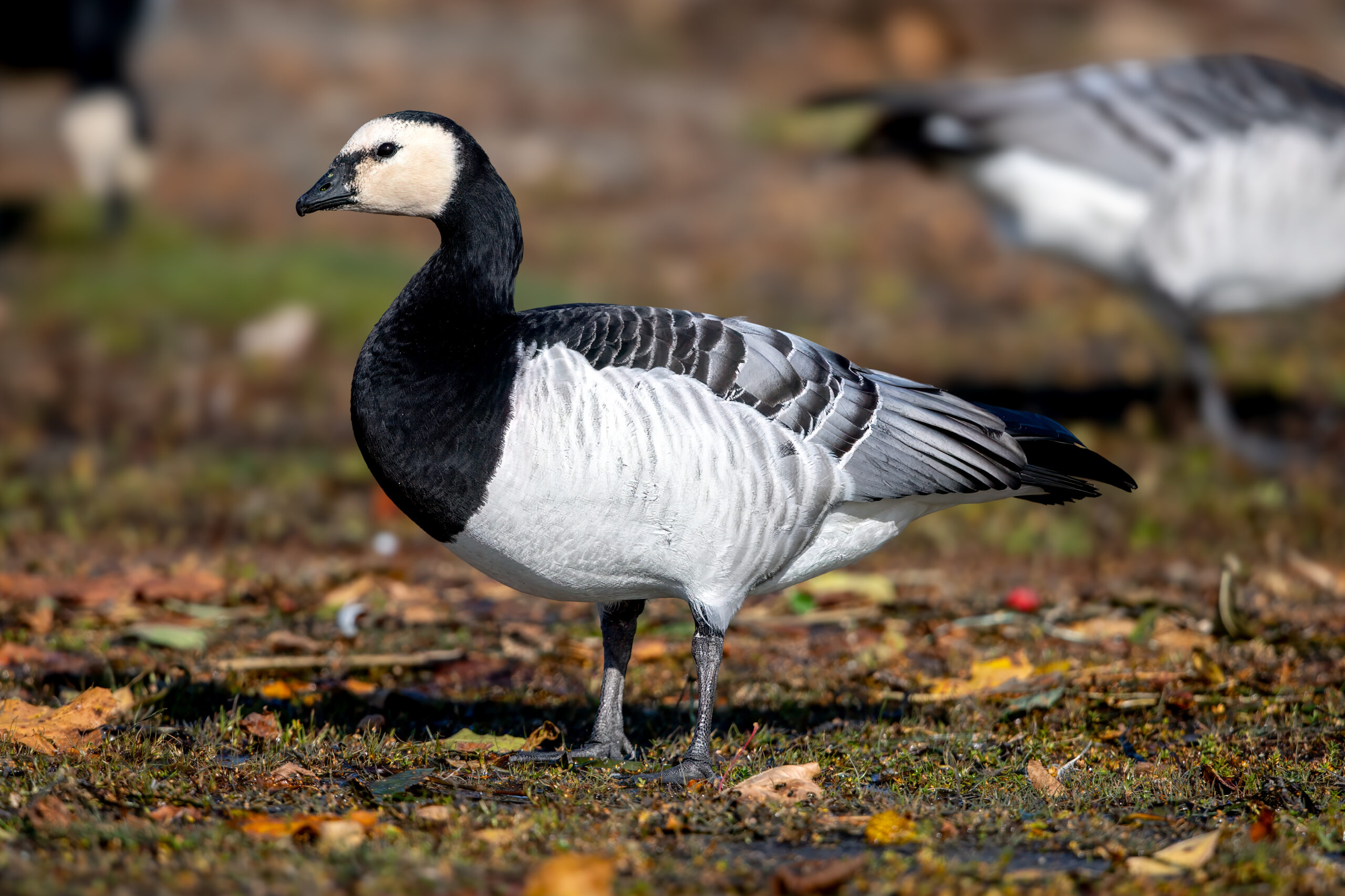Description
The Canada goose (Branta canadensis) is a large goose species with a distinctive black head and neck, white cheeks, and a brown body. It is native to North America, but has been introduced to Europe and New Zealand. Adults generally range from 90 to 115 cm (35-45 in) in length and from 2.6 to 6.5 kg (5.7-14.3 lbs) in weight. There is noticeable variation in sizes among different populations, attributed to the differences in habitats and available resources. This species is often confused with the similarly plumaged but smaller cackling goose (Branta hutchinsii), which is more compact in body and has a smaller bill and shorter neck.
Diet & habitat
Canada geese are adaptable birds found in a variety of habitats including lakes, rivers, ponds, and sometimes coastal areas. They are primarily herbivores, feeding on grasses, seeds, and grains, but can also consume insects, fish, and other small aquatic creatures when available. Their feeding habits are both grazing on land and dabbling in water.
Migration
Canada geese are known for their seasonal migrations, often symbolized by their V-shaped flying patterns. They breed in northern regions of North America during spring and migrate south for the winter. The timing and routes of their migration depend on the regional climate and availability of food. Introduced populations in northern Europe also migrates further south or to coastal areas in winter.
Nesting
Breeding season begins as they return to their northern habitats in the spring. Canada geese are monogamous and pairs remain together over multiple breeding seasons. Nesting sites are usually located near bodies of water. Females lay an average of 5 to 7 eggs, which are incubated for about 24 to 28 days. Goslings are precocial and can leave the nest within a day after hatching, although they remain with their parents for about a year. Canada geese are quite territorial during breeding season, and can become quite aggressive towards both predators and humans if they feel threatened or if their nests are approached too closely.
Introduced populations
The Canada goose has been introduced to various regions outside its native range, including parts of Northern and Western Europe, as well as New Zealand. They were introduced as ornamental waterfowl and for hunting, with the first introductions in France and Great Britain in the 17th century. These introductions have sometimes led to conflicts with human interests due to their aggressive behavior, competition with native bird species, damaging crops, and the significant amounts of droppings they produce, which can affect local biodiversity.
Status
The Canada goose is classified as least concern on the IUCN Red List, reflecting its wide distribution and large population sizes. Although it is not currently threatened, the species is subject to hunting and habitat loss in certain areas which can locally affect its numbers. The bird is seen as a pest in its introduced range and is listed as one of Europe’s worst invasive species.








